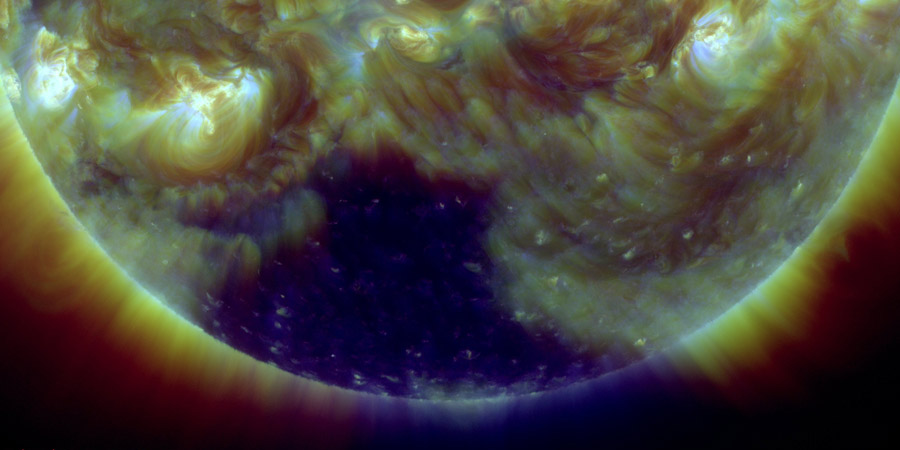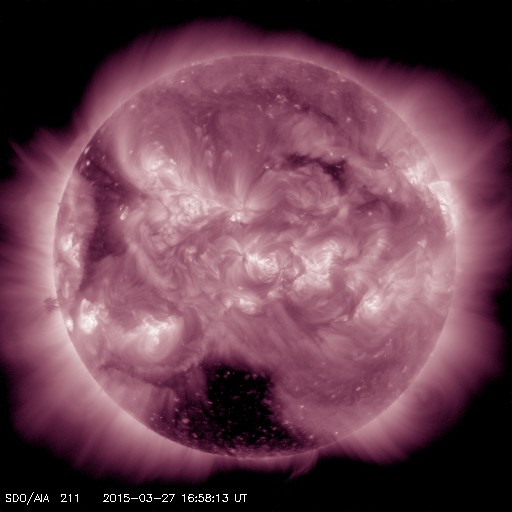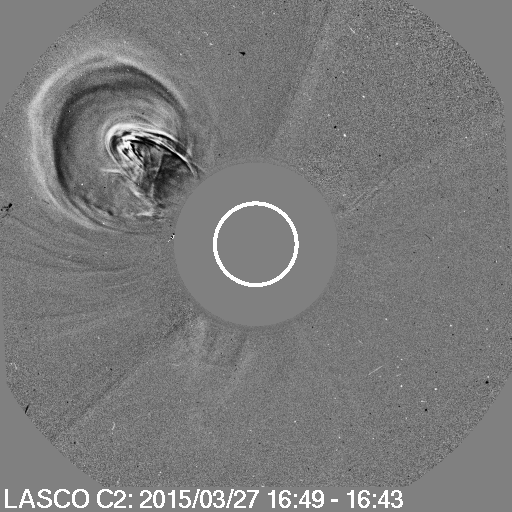Coronal hole facing Earth, prominence eruption
Friday, 27 March 2015 17:25 UTC

Solar activity is at low levels with only an occasional C-class solar flare being reported. Sunspot region 2305 which had a couple of delta sunspots a few days ago lost these structures and is now a relatively simple Beta-Gamma sunspot region which is unlikely to produce a strong solar flare. It seems likely that the solar activity will continue to be low (no M or X-class solar flares) in the days ahead as none of the sunspot regions on the earth-facing solar disk right now are capable of producing such flares.
Coronal hole facing Earth
This however doesn't mean that the Sun is totally devoid of interesting features. A look at the Sun in the 211 Ångström wavelength shows us that a northward extension of the southern hemisphere polar coronal hole is now facing Earth. Solar wind flowing from this coronal hole could arrive late on Saturday or Sunday and stir up a minor G1 geomagnetic storm as solar wind speeds are expected to reach 700km/s.

Image: Our Sun in the 211 Ångström wavelength. Coronal holes show up as dark areas on this image from NASA SDO.
Prominence eruption
We are staying at the Sun as another amazing solar phenomena caught our eye today. A prominence eruption took place today near the east limb. While it will have no effect on Earth (the associated coronal mass ejection is heading north-east and away from Earth) it is still an amazing event to watch.
Video: the prominence eruption as seen by NASA SDO.

Image: The coronal mass ejection associated with this eruption as seen here on SOHO/LASCO C2 is heading north-east of our planet and should have no impact on our geomagnetic field.
Thank you for reading this article! Did you have any trouble with the technical terms used in this article? Our help section is the place to be where you can find in-depth articles, a FAQ and a list with common abbreviations. Still puzzled? Just post on our forum where we will help you the best we can!
Latest news
Latest forum messages
Support SpaceWeatherLive.com!
A lot of people come to SpaceWeatherLive to follow the Sun's activity or if there is aurora to be seen, but with more traffic comes higher server costs. Consider a donation if you enjoy SpaceWeatherLive so we can keep the website online!

Space weather facts
| Last X-flare | 2024/03/28 | X1.1 |
| Last M-flare | 2024/04/19 | M1.0 |
| Last geomagnetic storm | 2024/04/16 | Kp5 (G1) |
| Spotless days | |
|---|---|
| Last spotless day | 2022/06/08 |
| Monthly mean Sunspot Number | |
|---|---|
| March 2024 | 104.9 -19.8 |


